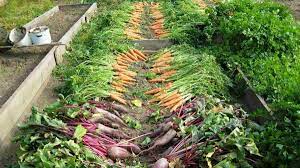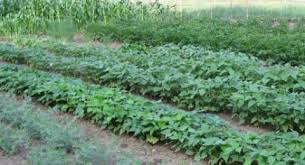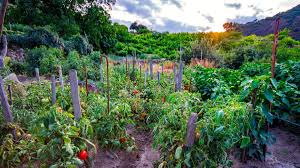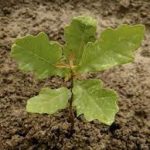How to Start a Vegetable Garden in 6 Steps
If you are planning to start a vegetable garden, you should choose a plot of land near a source of water. You can use a water hose to water the vegetables, or you can also install an automatic irrigation system. If water is scarce in your area, you can also use water-saving containers to store rainwater. Another important factor is the slope of the soil. Plants that grow at the bottom of a slope will get too much water, while plants growing on the top of a slope may dry out quickly.

Choosing a location
If you’re planning to plant vegetables, one of the most important decisions you’ll make is where to grow them. Depending on what type of vegetables you’d like to grow, it’s a good idea to choose an area where you have easy access and good soil conditions. Also, make sure the location isn’t near a pond or water source, which may pose problems.

The first step in planning a new vegetable garden is to choose a location where you can grow a variety of vegetables and fruits. If you live in a rural area, consider planting a variety of plants that don’t require daily harvesting, such as pumpkins, melons, onions, carrots, and determinat tomatoes. Consider the location’s exposure to sun, which can affect the types of plants you grow.
Choosing a plot size
The first step when starting a vegetable garden is to choose a plot that’s the right size. A 16-by-10-foot plot should be sufficient for ten common, productive plants. It’s also important to choose a location that provides eight to 10 hours of sunlight a day. Ideally, the plot should also be oriented north to south so that the tallest plants face the north. This is because tall plants may block the sunlight from shorter plants. In addition, it’s best to plant vegetables that have similar growth cycles. Also, make sure to leave enough space between rows of vegetables so that you can easily access each row.

Next, determine the types of vegetables that you want to grow. You can use a calculator to determine how many square feet of space your vegetable garden will require. Most calculators use the average amount of vegetables that people eat to determine the right size. However, keep in mind that different plants require different amounts of space to grow. If you’re planting in a small plot, it may be best to plant fewer, smaller vegetables.
Preparing the soil
Soil is one of the most important things to prepare before starting a vegetable garden. Ideally, you want to start with a loam-type soil that is well-drained, nutrient-rich, and has a balanced pH. While most garden soils are not created this way, you can fix any deficiencies to improve the soil’s quality and yield.
The first thing to do is to loosen the soil. The soil should be loose at least eight to 12 inches deep, so that roots can penetrate easily. Adding organic matter to the soil is another important step. It should be applied when the soil is moist, but not wet. When spreading the organic matter, be sure to spread it no more than 4 inches.
Planting seeds
The first step in planting vegetables is to prepare the soil. Clean it thoroughly, aerate it, and add organic material. Work this into the soil to create a fine texture. Next, make a list of the types of vegetables you would like to grow. Also, determine how many plants you would like to grow. Plant extras if you wish to preserve some of the vegetables for another time.
While selecting seeds, pay attention to the spacing of the seeds. You can plant small seeds close together, but you’ll have to thin out the seedlings to avoid overcrowding. For best results, plant seeds in rows, about a foot apart. This way, you can identify each seedling in a row more easily.
Feeding the plants
To ensure a healthy and productive garden, you need to regularly feed your plants. There are different types of plant food with different N-P-K ratios, so choose a fertilizer that is right for your vegetables. You should also pay attention to any signs of nutrient deficiency. These signs include yellowing of older leaves, small leaves, brown regions on leaves, and slow growth.
When you are planning to feed your vegetables, consider the following: soil type and nutrients. Clay-based soil needs less fertilizer, while sandy soil needs more. A water-soluble fertilizer is especially beneficial for vegetable plants, since it can be applied with a watering can. You can also choose organic fertilizers, though they may not work as quickly as other options. However, keep in mind that too much fertilizer can be harmful. Avoid sprinkling fertilizer on the foliage, as this can burn your plants.
Watering
Watering a vegetable garden is an important part of ensuring its healthy growth and preventing droughts. Vegetable plants require a lot of water, especially in hot weather, so it’s important to give them plenty of water. The type of soil that your garden is growing in will also affect how much water your plants need. For instance, sandy soil doesn’t retain water very well, while dense clay soils can retain more water.
A rain gauge is an excellent way to measure how much rain your garden gets each day. When it rains, a rain gauge should collect at least an inch of water. If the gauge doesn’t show that, it means that you need to water your garden. Another thing to keep in mind is that water evaporates slower when it’s humid outside, so repeating days of high humidity will not completely eliminate the need for watering.
Keeping weeds out
One of the most important things to do when starting a vegetable garden is to keep weeds out. Weeds are a nuisance that can severely reduce the yield and quality of your vegetables. They take up space and nutrients that the plants need to grow and thrive. Additionally, they act as alternate hosts for diseases and insects. Weeds are also an attractive way for rodents to nest in your garden. That is why weed control is so important.
One of the most common methods for keeping weeds out is to apply mulch. Mulches can be natural or synthetic. Mulches made of natural materials are ideal for preventing weed growth, but you can also use inorganic mulches such as plastic, fabric, and re-cycled rubber. Organic mulches can help to prevent weed growth, but they can choke out germinating seedlings.





